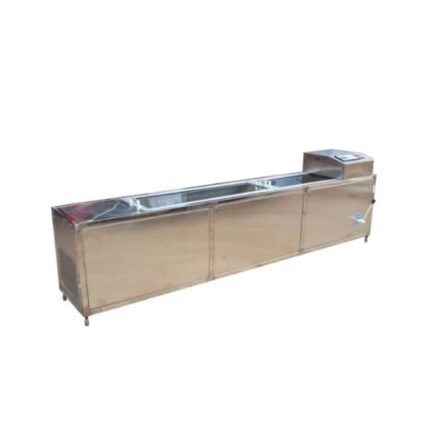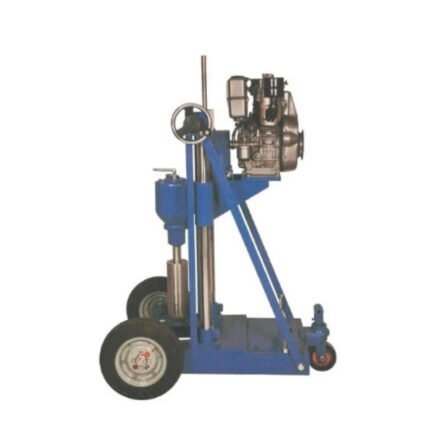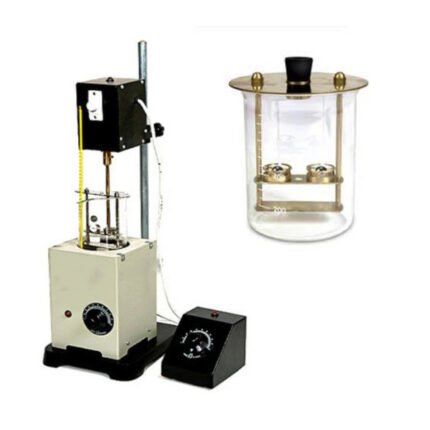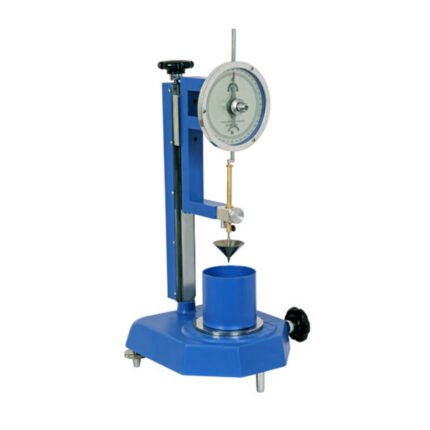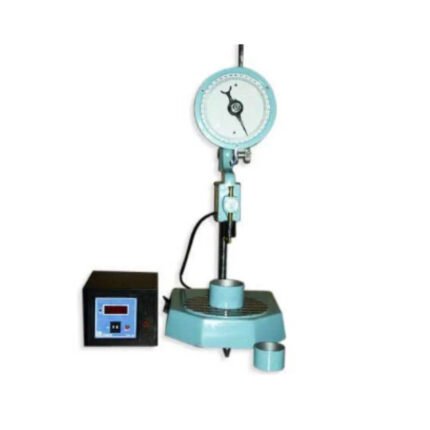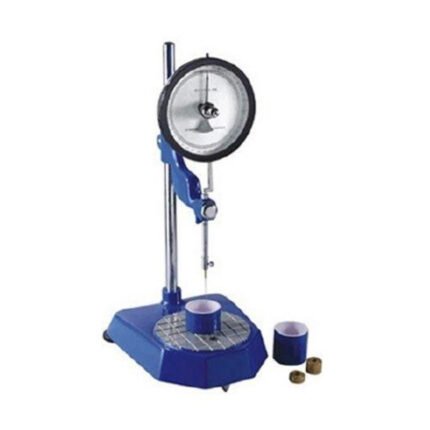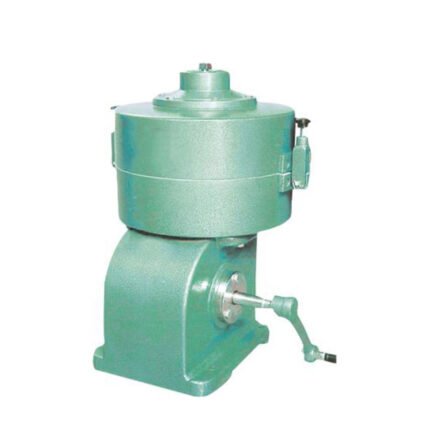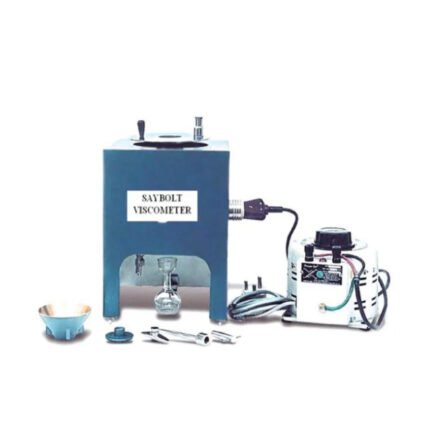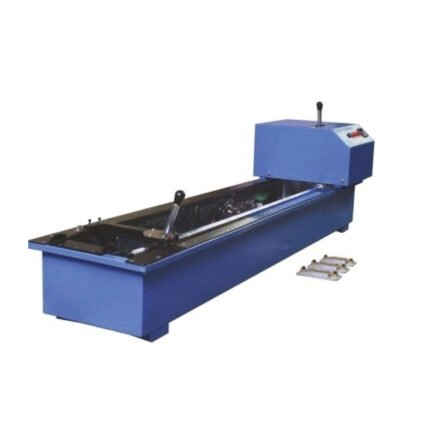AZA 0960 TRAVELLING BEAM DEVICE
- Pavement Roughness Assessment: Accurately measures longitudinal unevenness of road surfaces.
- Riding Quality Indicator: Provides critical data for evaluating pavement serviceability and comfort.
- Robust & Portable: Durable construction, designed for efficient field measurements.
- Consistent Results: Ensures repeatable measurements for effective quality control.
- Essential for QC & Maintenance: Key tool for new construction validation and identifying rehabilitation needs
Description
The AZA 0960 Travelling Beam Device from AZALAB is a fundamental and widely utilized instrument for assessing the surface unevenness or roughness of road pavements. It is an indispensable tool for highway engineers, construction companies, and quality control departments across India, enabling them to evaluate the riding quality and structural condition of both newly constructed and existing roads. The primary objective of using this device is to quantify the longitudinal irregularities of the pavement surface, which directly impacts vehicle operating costs, passenger comfort, and ultimately, the service life of the road.
At the core of the AZA 0960’s functionality is its precision measurement system, typically incorporating a long, rigid beam (commonly 3 or 4 meters in length). This beam is equipped with a measuring wheel or probe positioned at its center, while support wheels are located at either end. As the device is manually pushed or pulled along the pavement surface, the measuring wheel tracks the vertical deviations relative to the reference plane established by the end support wheels. These deviations are then recorded by a sensitive dial gauge or a digital display, providing a direct reading of the pavement’s unevenness. The principle relies on measuring the cumulative vertical movement over a defined length, which is then used to calculate an unevenness index, often expressed in mm/km. This method is crucial for ensuring compliance with quality specifications set by authorities like the Ministry of Road Transport & Highways (MoRTH) in India, particularly for assessing riding quality.
Key Applications and Benefits of the AZA 0960 Travelling Beam Device
The AZA 0960 Travelling Beam Device is constructed with meticulous attention to detail, emphasizing both precision and rugged durability for consistent performance in demanding field conditions. The beam itself is typically made from lightweight, high-strength aluminum alloy or robust steel, ensuring minimal deflection of the beam during operation and easy maneuverability. The measuring wheel and support wheels are engineered for smooth rolling and optimal contact with the pavement surface, minimizing errors due to friction or slippage. The dial gauge or digital display is highly accurate, often with a least count of 0.1 mm or 0.01 mm, allowing for very fine measurements of surface irregularities. Its simple yet robust design ensures easy setup, operation, and minimal maintenance.
The data obtained from the AZA 0960 is invaluable for:
- Quality Control of New Construction: Used to verify that newly laid asphalt or concrete pavements meet specified roughness criteria, ensuring high riding comfort and adherence to contractual obligations.
- Pavement Performance Monitoring: Helps track the deterioration of existing roads over time by periodically measuring changes in roughness, indicating when maintenance or rehabilitation is required.
- Maintenance Planning: Identifies specific sections of roads that exhibit excessive unevenness, allowing highway authorities to prioritize repair efforts and allocate resources effectively.
- Vehicle Operating Cost Analysis: Rougher roads lead to higher vehicle operating costs (fuel consumption, wear and tear), and data from the AZA 0960 can indirectly contribute to economic analyses. While the International Roughness Index (IRI) is a global standard for roughness, the Travelling Beam Device provides a direct measure of unevenness used widely in India and can often be correlated with IRI for comprehensive assessments. For detailed guidelines on pavement design and evaluation, resources from the Indian Roads Congress (IRC) are the primary reference.
Operating the AZA 0960 is straightforward. The device is placed on the pavement, initial readings are taken, and it is then manually traversed along the road section. Readings are recorded at specified intervals (e.g., every 100 meters or specific chainages). Routine maintenance typically involves keeping the beam and measuring components clean, inspecting wheels for wear, and periodically verifying the dial gauge’s calibration.
In conclusion, the AZA 0960 Travelling Beam Device from AZALAB is a cost-effective, reliable, and widely accepted tool for assessing pavement surface unevenness. Its ability to accurately measure road roughness provides critical data for informed decision-making in road construction quality assurance, maintenance planning, and ensuring safe and comfortable riding experiences across India’s extensive road network.
Specifications
- Model Number: AZA 0960
- Type: Travelling Beam Device (Road Roughness Tester)
- Application: Measurement of longitudinal unevenness of flexible and rigid pavements.
- Beam Length: Standard beam lengths, typically 3 meters or 4 meters.
- Measuring System:
- Sensor: Central measuring wheel or probe.
- Indicator: High-precision Dial Gauge (e.g., 0-10 mm range, 0.01 mm least count) or Digital Display.
- Support Wheels: Smooth-rolling wheels at either end of the beam for stable support.
- Construction Material: High-grade lightweight aluminum alloy or robust steel for the main beam.
- Portability: Designed for easy assembly, disassembly, and manual transport in the field.
- Unevenness Index Calculation: Used to calculate an unevenness index (e.g., mm/km) based on accumulated vertical deviations.
- Standard Compliance: Conforms to relevant national standards, including those specified by the Indian Roads Congress (IRC) and Ministry of Road Transport & Highways (MoRTH) for surface unevenness measurement.
- Weight: Varies depending on beam length and material, typically in the range of 20-40 kg.
- Accessories (Typical): Includes a carrying case, calibration stand (optional), and necessary tools for assembly.
FREQUENTLY ASKED QUESTIONS (FAQ)
Q1: What is the primary purpose of the AZA 0960 Travelling Beam Device? A1: The AZA 0960 Travelling Beam Device is primarily used to measure the longitudinal unevenness (roughness) of road pavement surfaces. This data is crucial for evaluating riding quality, assessing the structural condition of roads, and guiding maintenance decisions.
Q2: How does the Travelling Beam Device work? A2: It uses a long beam with support wheels at the ends and a central measuring wheel/probe. As the device is moved along the pavement, the central wheel tracks vertical deviations relative to the stable reference plane of the beam, which are recorded by a dial gauge or digital display.
Q3: What types of pavements can be tested with the AZA 0960? A3: The AZA 0960 is suitable for assessing surface unevenness on both flexible pavements (e.g., asphalt roads) and rigid pavements (e.g., concrete roads).
Q4: What is the typical beam length for the AZA 0960? A4: The AZA 0960 typically comes with a beam length of 3 meters or 4 meters, which are standard lengths for measuring pavement unevenness as per relevant guidelines in India.
Q5: How are the results from the Travelling Beam Device interpreted? A5: The readings are usually accumulated over a specific length (e.g., 100 meters), and an unevenness index (often in mm/km) is calculated. A lower index indicates a smoother road surface and better riding quality. These values are compared against specified limits for new construction or maintenance interventions.
Q6: What standards does this Pavement Unevenness Tester comply with in India? A6: The AZA 0960 Travelling Beam Device is manufactured to comply with specifications and guidelines from authorities like the Indian Roads Congress (IRC) and the Ministry of Road Transport & Highways (MoRTH), which govern road construction and quality control in India.
Additional information
| Model Number |
AZA 0960 |
|---|---|
| Type |
Travelling Beam Device (Road Roughness Tester) |
| Application |
Measurement of longitudinal unevenness of flexible and rigid pavements. |
| Beam Length |
Standard beam lengths, typically 3 meters or 4 meters. |
| Weight |
Varies depending on beam length and material, typically in the range of 20-40 kg. |
| Sensor |
Central measuring wheel or probe. |
Related products
AZA 0933 RING AND BALL APPARATUS (ELECTRICAL)
- AZA 0933 Ring & Ball Apparatus (Electrical): For bitumen softening point.
- Features electrically controlled 5°C/min heating rate.
- Digital temperature display with integrated magnetic stirrer.
- Complies with ASTM D36, EN 1427, and AASHTO T53.
- Ensures consistent heating and uniform bath temperature.
- Reliable and safer alternative to open-flame heating.
- Essential for asphalt quality control to predict high-temp performance. Here's the detailed content for the Azalab AZA 0933 Ring & Ball Apparatus (Electrical)
AZA 0938 STANDARD PENETROMETER
- AZA 0938 Standard Penetrometer: Reliable manual bitumen testing.
- Dial gauge with 0.1 mm resolution.
- Robust cast iron construction for durability.
- Conforms to ASTM D5, EN 1426, and other standards.
- Ideal for basic and consistent asphalt quality control.
- Manual operation for straightforward testing.
- Cost-effective solution for consistency determination
AZA 0939 DIGITAL PENETROMETER
- AZA 0939 Digital Penetrometer: For precise bitumen consistency testing.
- High-resolution 0.01 mm digital display.
- Programmable electronic timer for automatic penetration.
- Complies with ASTM D5, EN 1426, and other global standards.
- Minimizes human error, ensuring accurate & repeatable results.
- Robust design with fine adjustment, illumination & magnifier.
- Essential for quality control in asphalt and petroleum industries
AZA 0940 SEMI-AUTOMATIC PENETROMETER
- AZA 0940 Semi-Automatic Penetrometer: For bitumen consistency testing.
- Digital display with 0.01 mm resolution.
- Programmable electronic timer for automatic needle release.
- Meets ASTM D5 and EN 1426 standards.
- Ensures accurate & repeatable penetration results.
- Robust cast iron frame with fine leveling.
- Essential for asphalt quality control & grading
AZA 0944 CENTRIFUGE EXTRACTOR (HAND OPERATED)
- AZA 0944 Hand Centrifuge: For accurate bitumen content determination.
- Manual hand-crank operation; no external power needed.
- Durable cast aluminum construction for longevity.
- Ideal for asphalt and road paving mixture analysis.
- Removable aluminum bowl for easy sample handling & cleaning.
- Essential tool for civil engineering and material testing labs.
- Ensures quality control in road construction projects
AZA 0950 SAY BOLT VISCOMETER
- Empirical Viscosity: Measures flow time (efflux time) of liquids through a calibrated orifice.
- Dual Orifices: Typically equipped for both Saybolt Universal Viscosity (SUV) and Saybolt Furol Viscosity (SFV).
- Temperature Controlled: Features a precise heating system to maintain sample temperature during testing.
- Wide Application: Essential for testing lubricants, fuel oils, asphalt binders, and other petroleum products.
- Standard Compliant: Adheres to ASTM D88, AASHTO T72, and relevant IS standards for consistency.
AZA 0955 MIXER WITH HEATING JACKET
- Controlled Heating: Integrated jacket maintains precise, uniform temperatures during mixing.
- Homogeneous Blending: Ensures thorough and consistent mixing of viscous materials.
- Lab-Scale Precision: Ideal for preparing asphalt, bituminous, and other heated samples.
- Robust Construction: Durable design for demanding laboratory environments.
- Versatile Application: Suitable for mix design, quality control, and research

 Rock
Rock Aggregate
Aggregate Cement
Cement Concrete
Concrete Soil
Soil Steel
Steel Bitumen/Asphalt
Bitumen/Asphalt Security Survey Equipment
Security Survey Equipment General Items
General Items
